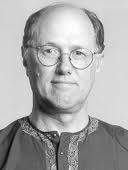OUR UNIVERSE IS VERY MUCH ALIVE by George Wolfe
Since the early 16th century, advancements in science have resulted in major paradigm shifts in our understanding of the universe. The shift from the geocentric view of the solar system to the heliocentric model, from special creation to evolution, from steady state theory to the expanding universe, and from Newtonian physics to general relativity and quantum mechanics, are but a few examples.
All of these new paradigms have one thing in common: the reality they present is increasingly counterintuitive to our everyday experience. My previous article “The Universe: Great Thought or Great Machine” (posted on March 8, 2014)) elicited several emails. One reader said that I needed “a dose of empiricism.” Empirically minded people find it hard to accept the idea that consciousness plays a role in quantum mechanics. Why? Because the subject-object duality we experience on this material level of the space-time continuum in which we exist seems like a self-evident truth. On the quantum level, however, this subject-object duality breaks down because the act of observing influences the outcome of the experiment.
Jerry Coyne, a professor of biology at the University of Chicago, responded to my article saying that the wave-particle collapse in quantum mechanics can occur with a non-conscious observer. But as another reader correctly pointed out, “If the recording of the event is erased without being examined, that the waveform doesn’t collapse.” Thus, interaction that includes a conscious observer is necessary for the wave-particle collapse to occur. Strange? Yes, but even stranger is the phenomenon of particle non-locality and entanglement (two particles instantaneously exchanging information over a great distance and behaving as one), which Albert Einstein called “spooky.”
Coyne further states that consciousness is the result of complex biological processes, but this is only true for the consciousness of individual organisms. The “observer” interaction required for the collapse of waves into particles underlies the entire material universe. Biological evolution makes it possible for complex organisms to evolve so that the underlying consciousness can express and eventuallyl know itself.
Nobel prize winning physicist Neils Bohr, in describing the structure of the atom, said “Everything we call real is made of things that cannot be regarded as real.” Stanford University physicist Leonard Susskind, in his book The Black Hole War, agrees, when he writes, “It seems that the solid three-dimensional world is an illusion of a sort.” He further states that, “Our naïve ideas about space, time, and information are wholly inadequate to understand most of nature.”
These statements sound absurd in the context of our everyday experience. But from the perspective of the underlying quantum field, which is comprised of wave patterns interfering with one another as one would find on a holographic negative, it’s simply the way it is. It is also confirmed by our knowledge that material objects, contrary to our senses telling us they are dense and solid, are comprised mostly of empty space.
Perhaps scientifically minded people shy away from the idea that consciousness plays a role in quantum mechanics out of the fear this universal consciousness may be interpreted as God. But if we do interpret it as God, it is certainly not God as described in the Bible. It is more akin to what in East Indian philosophy is called the “silent witness,” which is experienced as infinite awareness during meditation when mental activity subsides.
Transcendentalist writer Henry David Thoreau referred to it as “That everlasting something to which we are all allied.” If you don’t understand how this could be, join the club. Even the renowned physicist Richard Feynman, said, “no one [and he includes himself] understands quantum physics.” What we can say, however, is that on the quantum level, the universe is aware and very much alive.
George Wolfe is the Coordinator of Outreach Programs for the Ball State University Center for Peace and Conflict Studies. He also chairs the Muncie Interfaith Fellowship and is the author of the soon to be published book Meditations on Mystery: Science, Paradox and Contemplative Spirituality.



